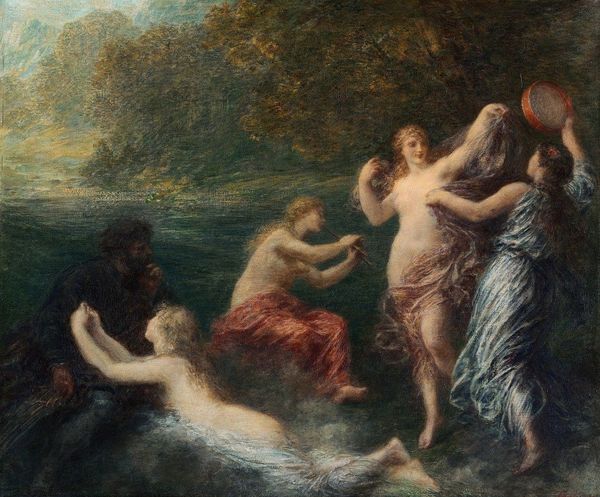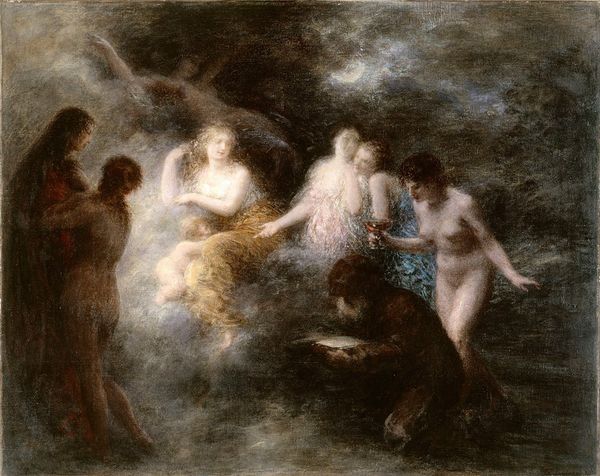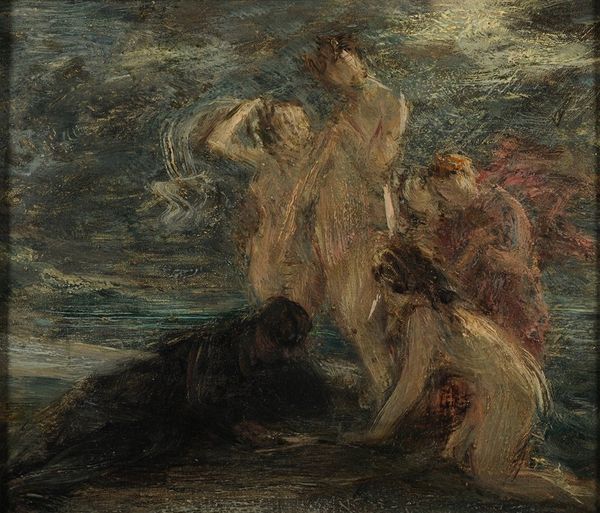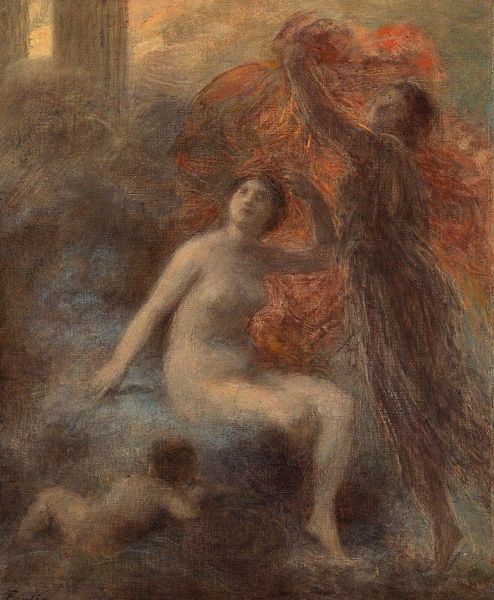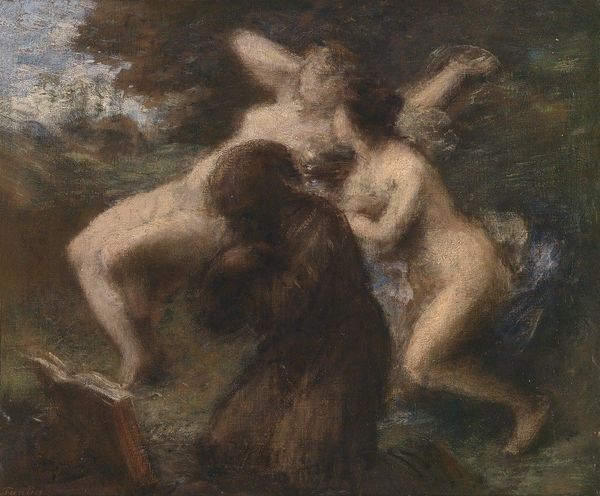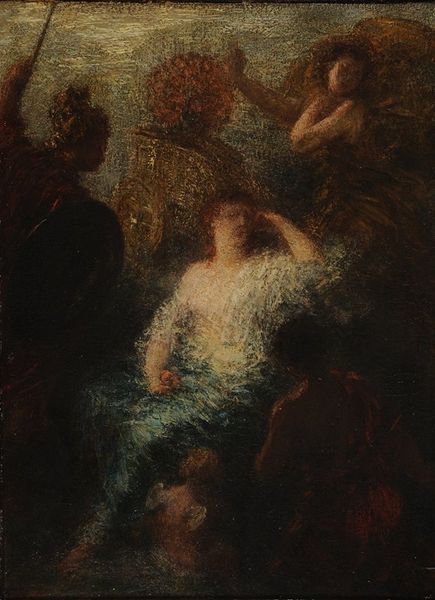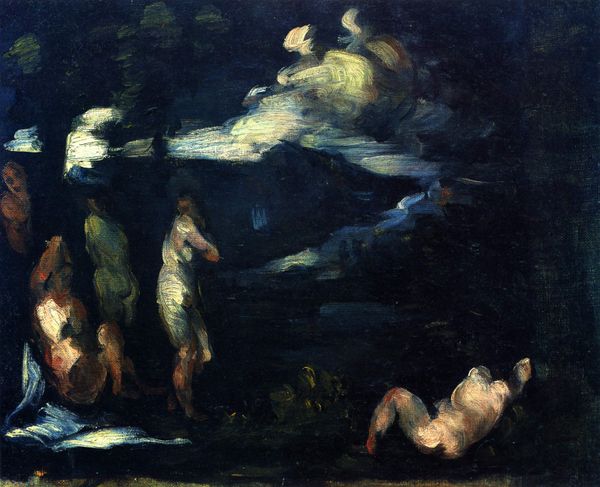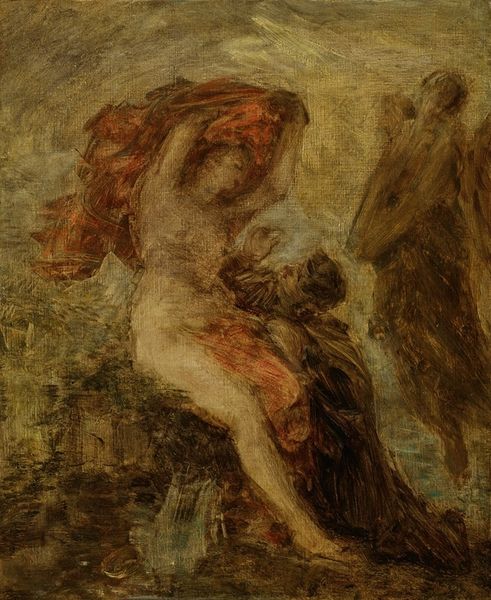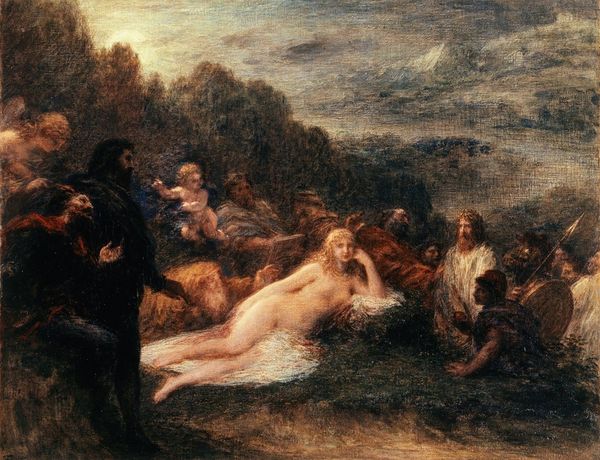
painting, oil-paint
#
allegory
#
painting
#
oil-paint
#
landscape
#
figuration
#
mythology
#
symbolism
#
watercolor
Copyright: Public Domain: Artvee
Henri Fantin-Latour painted “L’aurore Et La Nuit” with oil on canvas, depicting the figures of dawn and night in an ethereal style. This work is an example of the kind of allegorical painting that was common in France during the 19th century. The image’s meaning is created through its use of classical visual codes, such as the idealized nude figures which can be traced back to ancient Greek sculpture. Fantin-Latour, a French artist working in a period marked by significant social and political change, frequently drew inspiration from mythology. This was a time when the institutions of art, like the Académie des Beaux-Arts, still valued historical and mythological subjects. By engaging with these themes, artists could comment on contemporary society while couching their message in established artistic conventions. To fully understand this painting, we might consider the influence of French Symbolist literature on Fantin-Latour, or perhaps consult records from the Salon exhibitions to see how his contemporaries interpreted such works. The meaning of art is always contingent on its social and institutional context.
Comments
No comments
Be the first to comment and join the conversation on the ultimate creative platform.
